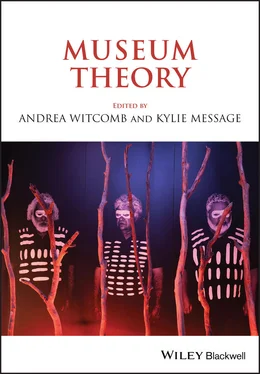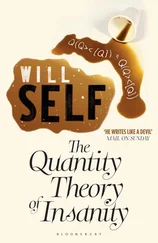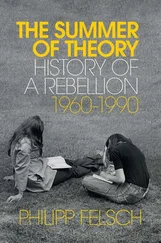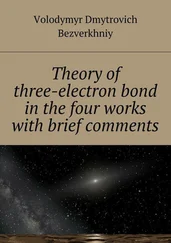Museum Theory
Здесь есть возможность читать онлайн «Museum Theory» — ознакомительный отрывок электронной книги совершенно бесплатно, а после прочтения отрывка купить полную версию. В некоторых случаях можно слушать аудио, скачать через торрент в формате fb2 и присутствует краткое содержание. Жанр: unrecognised, на английском языке. Описание произведения, (предисловие) а так же отзывы посетителей доступны на портале библиотеки ЛибКат.
- Название:Museum Theory
- Автор:
- Жанр:
- Год:неизвестен
- ISBN:нет данных
- Рейтинг книги:4 / 5. Голосов: 1
-
Избранное:Добавить в избранное
- Отзывы:
-
Ваша оценка:
- 80
- 1
- 2
- 3
- 4
- 5
Museum Theory: краткое содержание, описание и аннотация
Предлагаем к чтению аннотацию, описание, краткое содержание или предисловие (зависит от того, что написал сам автор книги «Museum Theory»). Если вы не нашли необходимую информацию о книге — напишите в комментариях, мы постараемся отыскать её.
Museum Theory — читать онлайн ознакомительный отрывок
Ниже представлен текст книги, разбитый по страницам. Система сохранения места последней прочитанной страницы, позволяет с удобством читать онлайн бесплатно книгу «Museum Theory», без необходимости каждый раз заново искать на чём Вы остановились. Поставьте закладку, и сможете в любой момент перейти на страницу, на которой закончили чтение.
Интервал:
Закладка:
The idea for a series of International Handbooks of Museum Studies came from Jayne Fargnoli at Wiley Blackwell and we are grateful to her for this and being such a great cheerleader for the project. She read a good deal of the work as it came in and knowing that this only increased her enthusiasm for the project boosted everyone’s energy as we chased deadlines. We also thank other staff at Wiley Blackwell for their role in the production processes, including, most recently, Jake Opie, for helping to at last allow us to bring out the individual volumes in paperback format.
Because of its extended nature and because things don’t always happen according to initial timetables, editorial work like this often has to be fitted into what might otherwise be leisure time or time allocated for other things. Luckily, both of our Mikes (Mike Beaney and Mike Leahy) were sympathetic, not least as both have deeply occupying work of their own; and we thank them for being there for us when we needed them.
Lastly, we would like to thank each other. We have each benefited from the other’s complementary expertise and networks, from the confidence of having that insightful second opinion, and from the sharing of the load. Having some-body else with whom to experience the frustrations and joys, the tribulations and amusements, has made it so much more fun. Not only has this helped to keep us relatively sane, but it has also made The International Handbooks of Museum Studies so much better than they would otherwise have been.
Sharon Macdonald and Helen Rees Leahy, August 2014 and July 2019
INTRODUCTION: MUSEUM THEORY An Expanded Field
Kylie Message and Andrea Witcomb
At a public lecture delivered in September 2013 in Canberra, Nicholas Thomas, director of the University of Cambridge Museum of Archaeology and Anthropology, remarked that the–now not so “new”–new museology has been preoccupied with the politics of museums at the expense of remembering and theorizing what museums are and do (Thomas 2013). The journal of the American Anthropological Association, Museum Anthropology , had previously published a “commentary” piece by Thomas in which he had presented his preliminary sug-gestions for exploring what he called the “museum as method.” Thomas had pro-posed the museum as method as a conceptual approach for reflection that may lead to innovation in the ways we think about museums as complex assemblages of meaning. He used this idea to challenge the generally accepted understanding that theory is primarily aligned with academic disciplines and discourse–a pre-sumption that overlooks the reality, which is that museums have been and con-tinue to be key sites for the creation of theory. He explained:
If it has been taken for granted for several generations that the locus of innovation in disciplines such as anthropology has been “theory,” there is now scope to think differently and to revalue practices that appeared to be, but were actually never, sub-theoretical … [I have] not tried to map out in any rigorous way what an understand-ing of “the museum as method” might entail. My general point is simply that one can work with contingencies, with the specific qualities and histories of artifacts and works of art, in ways that challenge many everyday or scholarly understandings of what things are and what they represent. (Thomas 2010, 8)
Thomas argued that understanding the museum as method means coming to terms with the role played by contingency –that is, the specificities of chance and unpredictability–in day-to-day museum work. From our perspective as the editors of this volume on museum theory, his ideas intersect with and affirm broader dis-ciplinary discussions occurring in other sectors about the opportunities for renewal and innovation that can arise from debates over disciplinary crisis. The broad church of the humanities, for example, is often discussed as being caught in a per-petual cycle of crisis, dissonance, and renewal, a process that is often explained as being productive and as generating opportunities for the future. Focused on the specific discipline of anthropology and its relationship to the museum, which is the main vehicle through which the public have come to know the discipline, Thomas’s main concern is that “mainstream anthropology arguably continues to drift away from the museum as a research resource or site of analysis,” even despite the revival of debate around art and material culture that occurred in the 1980s and 1990s (Thomas 2010, 6).
The unpredictability that Thomas identifies as being potentially valuable for attempts to develop museum theory (Thomas 2010, 7) can be understood as having similarities with theories first raised by John Tunbridge and Gregory Ashworth in 1996 in relation to ideas about dissonance. 1In the context of the interdisciplinary field of heritage studies, for example, Tunbridge and Ashworth (1996, 21) argued that heritage is, at its core, dissonant because the messages, values, and meanings that different people create about heritage and the pasts it represents are always going to be interpreted and understood differently by individuals and groups with different backgrounds, experiences, interests, and agendas. While discord, conflict, contest, and lack of agreement in the way that the past is represented can perhaps be most readily perceived in relation to places and instances of “difficult” heritage (representing historical brutality, genocide, wars, and so on), dissonance is, in their view, inherently and inevitably created when something takes on the status of “heritage.”
Thomas’s ideas, and those of Tunbridge and Ashworth (1996) and others, pro-vide a useful and timely series of links and contextual relationships with the con-cerns motivating this book, including: first, the analysis of the disciplinary affiliations of museum work; second, our attention to demonstrating the museum as a locus of theory, where theory is generated within the museum; and, third, the discussion about disciplinary crisis that can extend from this analysis. Unlike Thomas, however, our intention in building this collation of contributions has been to explore the issues of disciplinary control (through affiliation) and crisis through a discourse about conjunctural politics. While we take his point about the tendency for the new museology to be preoccupied with the contemporary poli-tics of museums, perhaps at the expense of broader projects of theorizing muse-ums on their own terms, our aim in this book has been to investigate the hypothesis that every aspect of museum work is–and has always been–political. Hence, the case studies and discussions included herein have been invited for the contribution that they can make to understanding and challenging ideas about the interrelationships between culture and politics.
Background
Museums have long been understood by museum studies researchers as sites of politics and culture, where themes of power, citizenship, and democracy have played out in or been ignored by officially sanctioned spaces of representation.The first phase of museum studies, affiliated with history, art history, sociology, cultural studies, and Foucauldian cultural theory, addressed the process of nation building that had motivated the development of mid-nineteenth-century public museums. Scholars situated museums as agencies of liberal governance which, through their capacity to represent and construct imagined communities, are involved in molding citizens who are informed and able to take part in modern democratic life (Sherman 1994; Bennett 1995; 1998a). The new museology was influenced by postcolonial theory, cultural theory (identity politics), and the “history wars” of the era (Luke 2002). Boosted by a post-1989 surge in scholarship concerned with the public sphere, the new museology became popular in the 1990s because of its contention that the political work of museums extended to the capacity of these institutions to represent the interests and concerns of disadvantaged and minority groups to the broader national community (Karp, Lavine, and Kreamer 1992; Macdonald and Fyfe 1996; Simpson 1996; Sandell 2002; Kreps 2003; Peers and Brown 2003; Witcomb 2003).
Читать дальшеИнтервал:
Закладка:
Похожие книги на «Museum Theory»
Представляем Вашему вниманию похожие книги на «Museum Theory» списком для выбора. Мы отобрали схожую по названию и смыслу литературу в надежде предоставить читателям больше вариантов отыскать новые, интересные, ещё непрочитанные произведения.
Обсуждение, отзывы о книге «Museum Theory» и просто собственные мнения читателей. Оставьте ваши комментарии, напишите, что Вы думаете о произведении, его смысле или главных героях. Укажите что конкретно понравилось, а что нет, и почему Вы так считаете.












